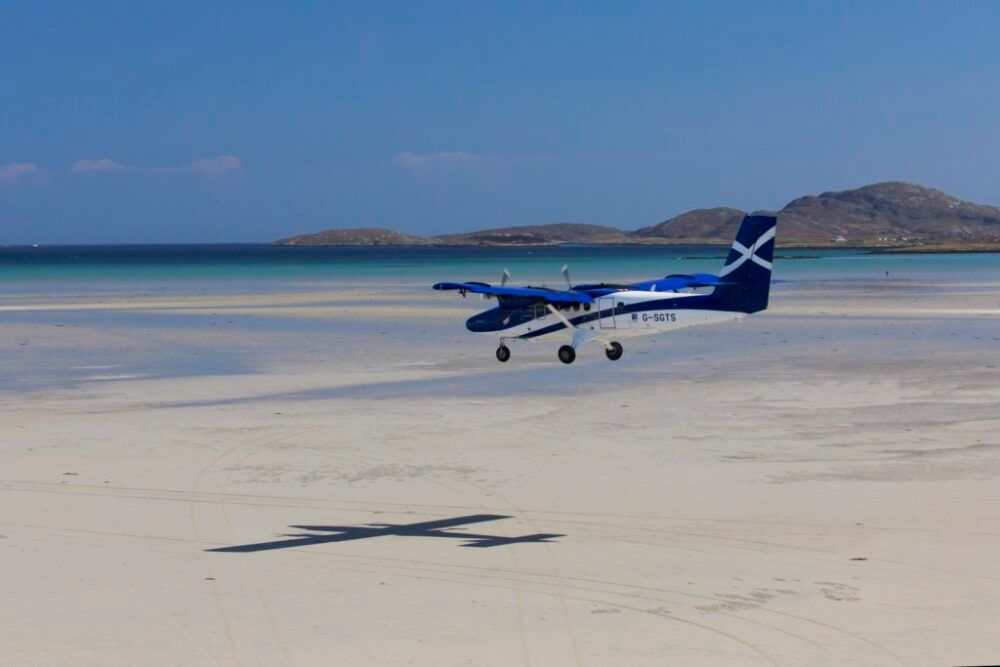One of the reasons small regional airlines have weathered COVID-19 reasonably well is their fundamental mission of connection. Regional airlines, like Loganair, connect people to where they need to go, often where geography or remoteness makes air travel the only practical method of transport.
Whether in the outback of Australia, the frozen north of Canada or the islands of Scotland, regional airlines are at the center of the community. However, they are also commercial businesses that need to make money, so when one as well-known as Loganair is offered for sale, it affects more than just the airline.
Alan Wilson via Wikimedia
Handing over the Loganair baton
Loganair has been majority owned by Scottish brothers Stephen and Peter Bond for 25 years, who now say it’s time to step back from running the business. The brothers have appointed London-based merger and acquisition specialists Arrowpoint Advisory to handle approaches from interested parties.
Yesterday, the UK’s Sunday Times reported that in the financial year to March, Loganair recovered strongly from the pandemic doldrums, doubling year-on-year revenue to £161 million ($178.3 million). Maximizing the price of any sale relies a lot on timing, so a bright future is essential. In the 2022/23 financial year, the company is forecasting revenue soaring by 150% to £240 million ($266m), generating earnings of more than £15 million ($16.6m), compared to £9 million ($9.96m) this year.
Loganair runs a mix of scheduled and government-subsidized services to more than 30 destinations, mainly on regional flights in the United Kingdom. According to ch-aviation.com, it has a fleet of 44 aircraft comprising 14 ATR42/72s, three DHC-6 Twin Otters, 16 Embraer 135/145s, and 11 Saab 340 turboprops. This list includes six designated cargo aircraft but not the two Britten-Norman BN-2 Islanders so often photographed landing on the beach at Barra Airport (BRR) in Scotland’s Outer Hebrides.
Loganair operates to the only airport in the world where the runway is a beach. Photo: Highlands and Islands Airports
Being agile has brought success
When the Bond brothers first invested in Loganair in 1997, it had just six aircraft carrying 35,000 passengers annually. It benefited from the collapse of Flybe, once the largest independent regional airline in Europe, in March 2020 by picking up new routes and destinations. Simpson attributes part of Loganair’s success down to its agility, long before becoming agile was a favored management descriptor. He said,
“One of the benefits we’ve had is to be small enough to be fleet of foot – where opportunities come up, we’ve worked very quickly to move into them. It’s been a success story in terms of where we’ve got to, and the shareholders now feel it’s the right time to pass the baton onto new owners.”
For the current financial year, Loganair expects to carry 1.4 million passengers. Executive chairman Peter Simpson said the company was taking a cautious approach to passenger demand, but it “did see the recovery cycle continuing.” He added that the airline had recently repaid a COVID-era government loan of £25 million ($27.7m) ahead of time and is trading “free of any bank debt.”
Simpson also said that Loganair had renegotiated more favorable leases on some of its planes, which is a good thing for prospective buyers, with the Sunday Times reporting about three-quarters of the fleet is leased.
It would be great to hear from Loganair passengers about how important the airline is to them.
Source: Sunday Times

.jpeg)



